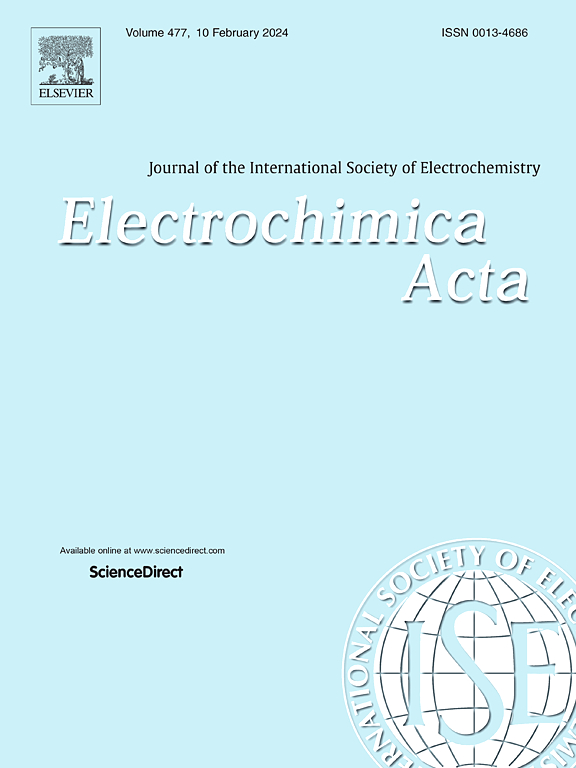Regulating the local charge distribution in NiCo2O4@CoWO4 anode materials for hybrid asymmetric supercapacitors
IF 5.5
3区 材料科学
Q1 ELECTROCHEMISTRY
引用次数: 0
Abstract
A desirable material with high surface area and optimized electronic properties is urgently required to boost the supercapacitors performance. Herein, we develop a hierarchical heterogeneous electrode material of NiCo2O4@CoWO4/NF with nano-needles combined core-shell structure. This hierarchical heterogeneous electrode material features optimized interface charge distribution, which improves the electron transfer rate and storage density. In addition, we propose a mechanism concerning that the heterogeneous interface improves the surface electron delocalization to enhances the hydroxyl adsorption energy. The hydroxyl adsorption energy is increased from 0.95 eV to 1.13 eV in the presence of NiCo2O4@CoWO4 heterogeneous interface. As a result, the reaction kinetics between the electroactive center of NiCo2O4 and the collector is enhanced under the strong interfacial coupling of CoWO4, a specific capacity as high as 1624 C g−1 (with a current density of 1 A g−1), and an energy density of 88.38 Wh kg−1 (with a power density of 884.78 W kg−1) with a wide voltage window of 0-1.7 V. In addition, it also shows surprising cycling stability with 98% capacity retention after 10,000 cycles at a current density of 10 A g−1. This work provides a new strategy for optimizing the surface and interfacial electronic properties of heterostructure materials.调节镍钴氧化物@钴氧化物负极材料中的局部电荷分布以制造混合非对称超级电容器
要提高超级电容器的性能,迫切需要一种具有高比表面积和优化电子特性的理想材料。在此,我们开发了一种具有纳米针状核壳组合结构的 NiCo2O4@CoWO4/NF 分层异质电极材料。这种分层异质电极材料优化了界面电荷分布,提高了电子传输速率和存储密度。此外,我们还提出了一种机制,即异质界面改善了表面电子脱局域,从而提高了羟基吸附能。在 NiCo2O4@CoWO4 异质界面存在时,羟基吸附能从 0.95 eV 提高到 1.13 eV。因此,在 CoWO4 的强界面耦合作用下,NiCo2O4 的电活性中心与集电体之间的反应动力学得到了增强,比容量高达 1624 C g-1(电流密度为 1 A g-1),能量密度为 88.38 Wh kg-1(功率密度为 884.78 W kg-1),电压窗口宽达 0-1.7 V。这项工作为优化异质结构材料的表面和界面电子特性提供了一种新策略。
本文章由计算机程序翻译,如有差异,请以英文原文为准。
求助全文
约1分钟内获得全文
求助全文
来源期刊

Electrochimica Acta
工程技术-电化学
CiteScore
11.30
自引率
6.10%
发文量
1634
审稿时长
41 days
期刊介绍:
Electrochimica Acta is an international journal. It is intended for the publication of both original work and reviews in the field of electrochemistry. Electrochemistry should be interpreted to mean any of the research fields covered by the Divisions of the International Society of Electrochemistry listed below, as well as emerging scientific domains covered by ISE New Topics Committee.
 求助内容:
求助内容: 应助结果提醒方式:
应助结果提醒方式:


